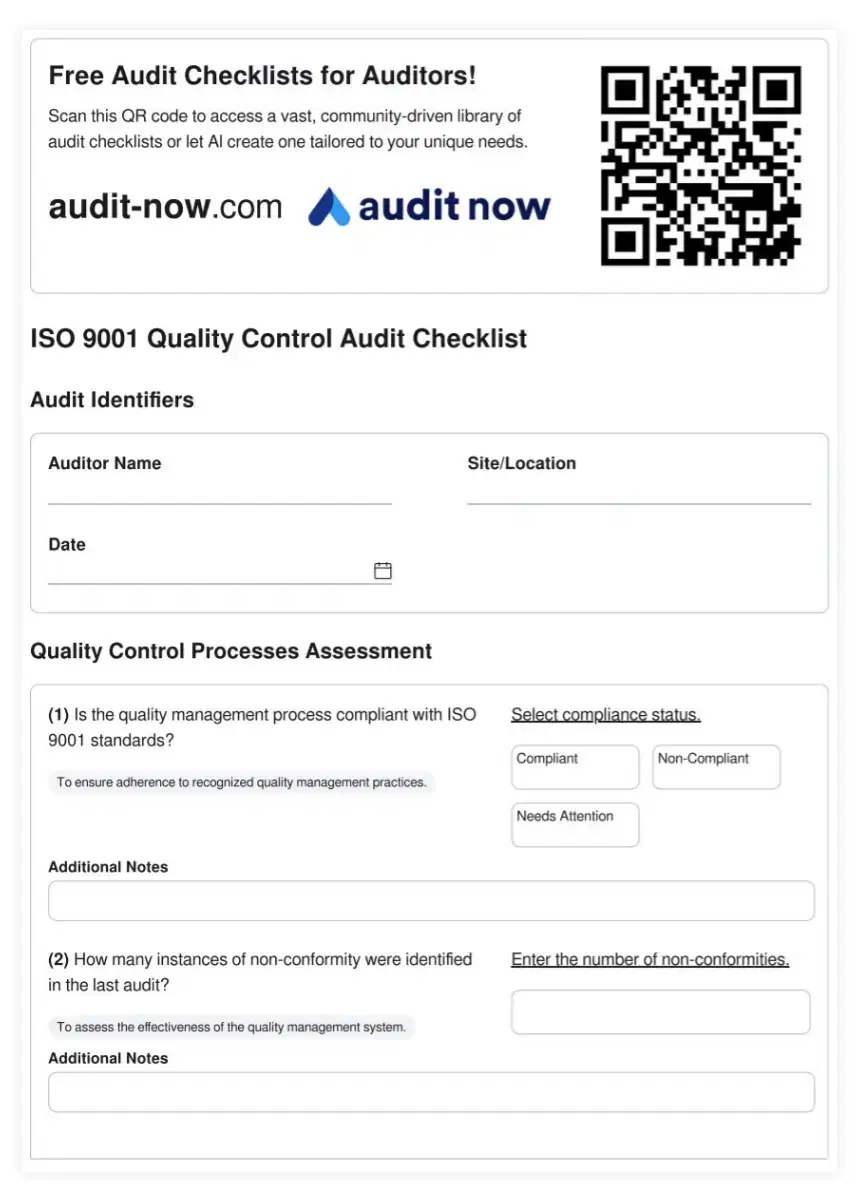DO-178C: Ensuring Safety and Compliance in Avionics Software Development

Featured Checklist

DO-178C Software Requirements Management Audit Checklist
The DO-178C Software Requirements Management Audit Checklist is an indispensable tool for ensuring the integrity and completeness of software requirements in aerospace and defense applications. This comprehensive checklist addresses the critical aspects of requirements management as outlined in the DO-178C guidelines, helping organizations to establish, document, and maintain clear, traceable, and verifiable software requirements throughout the development lifecycle. By systematically evaluating the requirements management process, from initial capture to final validation, this checklist enables auditors and quality assurance professionals to maintain the highest standards of safety, reliability, and compliance in avionics software development, ultimately contributing to enhanced aviation safety and streamlined certification processes.
Understanding DO-178C: The Cornerstone of Avionics Software Safety
DO-178C, also known as "Software Considerations in Airborne Systems and Equipment Certification," is a crucial guideline for developing avionics software. This standard, recognized by aviation authorities worldwide, ensures that software-based aerospace systems meet stringent safety requirements. DO-178C provides a comprehensive framework for the entire software development lifecycle, from requirements gathering to testing and maintenance.
Key Objectives and Principles of DO-178C
The primary goal of DO-178C is to enhance aviation safety by establishing rigorous processes for software development. It emphasizes the importance of traceability, verification, and validation throughout the development cycle. The standard introduces the concept of "software levels" based on the potential impact of software failure, ranging from Level A (catastrophic) to Level E (no safety effect). This risk-based approach allows developers to tailor their efforts according to the criticality of the software component.
Core Audit Requirements and the Importance of Checklists
Auditing against DO-178C requires a thorough understanding of its requirements and a systematic approach to verification. Checklists play a vital role in ensuring compliance and maintaining consistency across audits. They serve as a roadmap for auditors, helping them navigate the complex landscape of DO-178C requirements. A well-designed checklist covers all aspects of the standard, including planning, development, verification, configuration management, and quality assurance processes.
Key areas that checklists should address include:
- Software planning and development processes
- Requirements traceability
- Verification methods and results
- Tool qualification
- Configuration management practices
- Quality assurance activities
By using comprehensive checklists, auditors can ensure that no critical aspect of DO-178C compliance is overlooked. This systematic approach not only streamlines the audit process but also provides a clear record of compliance efforts, which is invaluable for regulatory approvals and ongoing maintenance of certified systems.
Discover Checklists
Discover ready-made checklists aligning with the requirements of DO-178C.
Discover Checklists
Implementing DO-178C: Best Practices and Challenges
Adopting DO-178C can be a complex undertaking, requiring significant resources and expertise. One of the key challenges is interpreting the standard's requirements in the context of specific projects. Best practices for implementation include establishing a robust software development plan, maintaining clear documentation throughout the process, and fostering a culture of safety and quality within the development team.
Another critical aspect is the selection and qualification of software tools. DO-178C introduces more stringent requirements for tool qualification, ensuring that the tools used in the development process do not introduce errors or compromise the integrity of the software. Organizations must carefully evaluate and document their tool selection process to meet these requirements.
The Role of Model-Based Development in DO-178C Compliance
Model-based development (MBD) has gained traction in the avionics industry as a means to improve efficiency and reduce errors in software development. DO-178C acknowledges the growing importance of MBD by providing guidance on how to incorporate model-based techniques into the certification process. This includes considerations for model coverage analysis and the use of simulation in verification activities.
While MBD can streamline development and verification processes, it also introduces new challenges in terms of tool qualification and traceability. Organizations adopting MBD must ensure that their processes align with DO-178C requirements and that they can demonstrate the same level of rigor and traceability as traditional development methods.
Continuous Improvement and Adaptation in DO-178C Auditing
The field of avionics software development is constantly evolving, with new technologies and methodologies emerging regularly. While DO-178C provides a solid foundation for safety-critical software development, it's essential for organizations to stay informed about industry trends and potential updates to the standard. Continuous improvement in audit processes, including regular reviews and updates of audit checklists, is crucial for maintaining effectiveness and relevance.
Auditors and quality managers should actively seek feedback from development teams and stay engaged with industry forums and regulatory bodies. This proactive approach ensures that audit processes remain aligned with both the letter and spirit of DO-178C, while also accommodating advancements in software development practices.
Conclusion: Embracing DO-178C for Safer Skies
DO-178C stands as a testament to the aviation industry's commitment to safety and quality. By providing a comprehensive framework for software development and certification, it enables the creation of highly reliable avionics systems. For organizations involved in aerospace software development, mastering DO-178C is not just about compliance—it's about contributing to the safety and advancement of aviation technology.
Effective auditing, supported by well-crafted checklists and a deep understanding of the standard's requirements, plays a crucial role in this process. As the industry continues to innovate, the principles of DO-178C will remain a guiding light, ensuring that safety remains paramount in the ever-expanding world of avionics software.
For more resources on DO-178C auditing and compliance, explore our audit templates or use our AI-powered checklist generator to create customized audit checklists tailored to your specific needs.
Most Popular 10 DO-178C Checklists
DO-178C Software Safety Assessment Audit Checklist
DO-178C Software Planning Process Audit Checklist